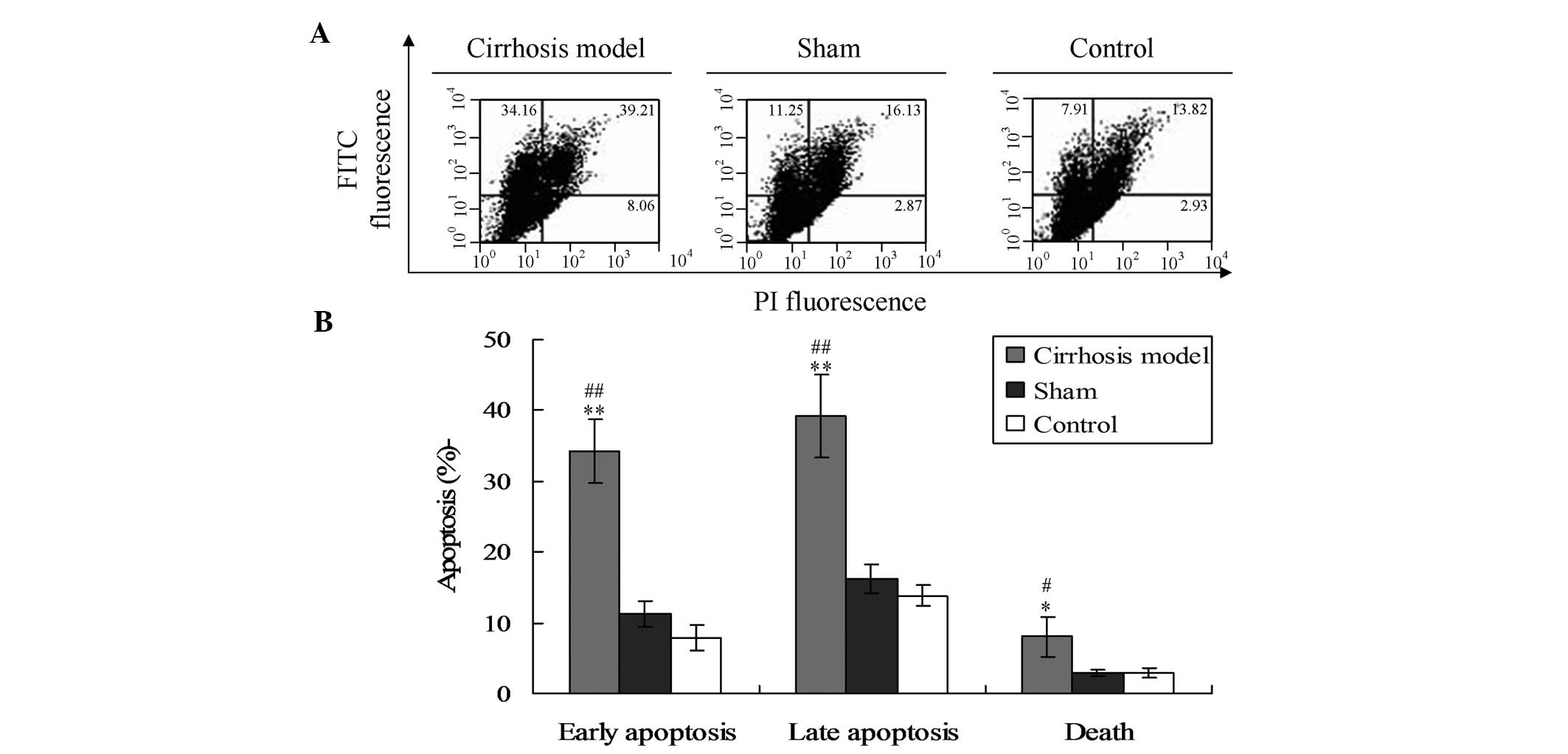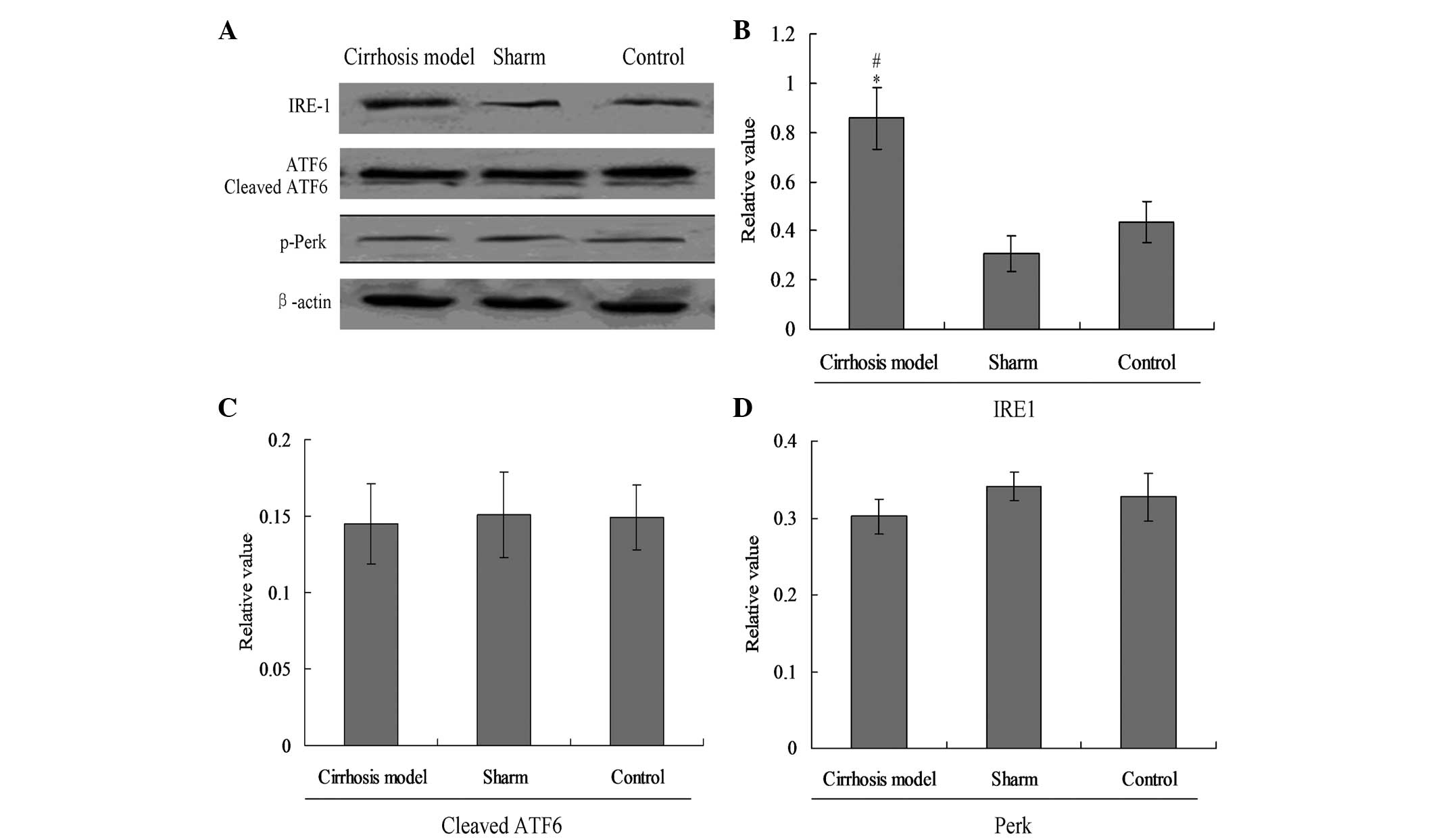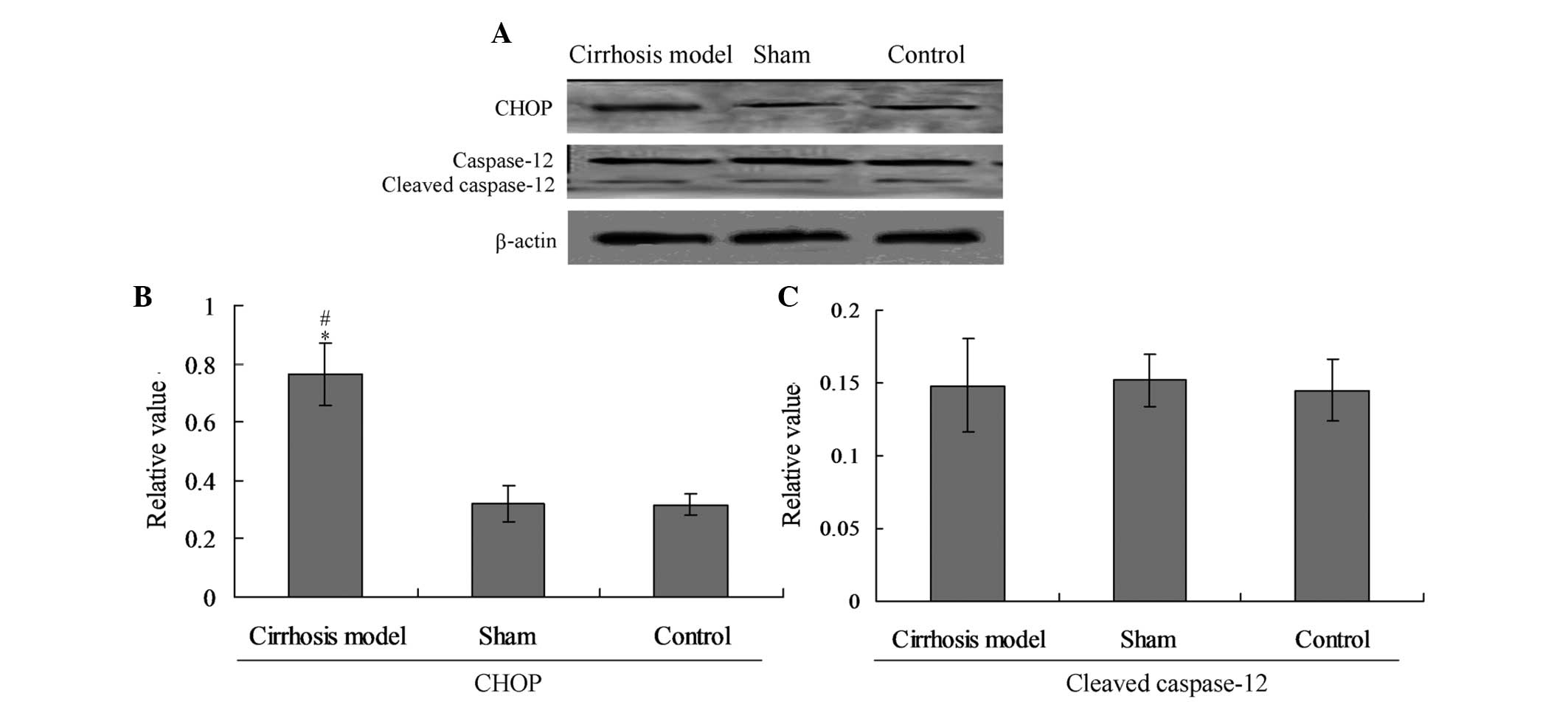|
1
|
Zhang C, Wang Y, Chen H, Yang G, Wang S,
Jiang M, Cong L, Yuan L, Li H and Jia Y: Protective effect of the
herbal medicine Gan-fu-kang against carbon tetrachloride-induced
liver fibrosis in rats. Mol Med Rep. 8:954–962. 2013.PubMed/NCBI
|
|
2
|
Kim WH, Matsumoto K, Bessho K and Nakamura
T: Growth inhibition and apoptosis in liver myofibroblasts promoted
by hepatocyte growth factor leads to resolution from liver
cirrhosis. Am J Pathol. 166:1017–1028. 2005. View Article : Google Scholar : PubMed/NCBI
|
|
3
|
Alcolado R, Arther MJP and Iredale JP:
Pathogenesis of liver fibrosis. Clin Sci (Lond). 92:103–112.
1997.
|
|
4
|
Yoshiji H, Noguchi R, Ikenaka Y, Kaji K,
Aihara Y, Douhara A, Yamao J, Toyohara M, Mitoro A, Sawai M,
Yoshida M, Morioka C, Fujimoto M, Uemura M and Fukui H: Combination
of branched-chain amino acid and angiotensin-converting enzyme
inhibitor improves liver fibrosis progression in patients with
cirrhosis. Mol Med Rep. 5:539–544. 2012.
|
|
5
|
Ramadori G and Saile B: Mesenchymal cells
in the liver - one cell type or two? Liver. 22:283–294. 2002.
View Article : Google Scholar : PubMed/NCBI
|
|
6
|
Cha JH, Bae SH, Kim HL, Park NR, Choi ES,
Jung ES, Choi JY and Yoon SK: Branched-chain amino acids ameliorate
fibrosis and suppress tumor growth in a rat model of hepatocellular
carcinoma with liver cirrhosis. PLoS One. 8:e778992013. View Article : Google Scholar : PubMed/NCBI
|
|
7
|
Yung HW, Korolchuk S, Tolkovsdy AM,
Charnock-Jones DS and Burton GJ: Endoplasmic reticulum stress
exacerbates ischemia-reperfusion-induced apoptosis through
attenuation of Akt protein synthesis in human choriocarcinoma
cells. FASEB J. 21:872–884. 2007. View Article : Google Scholar :
|
|
8
|
Moenner M, Pluquet O, Bouchecareilh M and
Chevet E: Integrated endoplasmic reticulum stress responses in
cancer. Cancer Res. 67:10631–10634. 2007. View Article : Google Scholar : PubMed/NCBI
|
|
9
|
Banjerdpongchai R, Punyati P, Nakrob A,
Pompimon W and Kongtawelert P: 4′-Hydroxycinnamaldehyde from
Alpinia galangal (Linn.) induces human leukemic cell apoptosis via
mitochondrial and endoplasmic reticulum stress pathways. Asian Pac
J Cancer Prev. 12:593–598. 2011.
|
|
10
|
Hung JY, Hsu YL, Ni WC, Tsai YM, Yang CJ,
Kuo PL and Huang MS: Oxidative and endoplasmic reticulum stress
signaling are involved in dehydrocostuslactone-mediated apoptosis
in human non-small cell lung cancer cells. Lung Cancer. 68:355–365.
2010. View Article : Google Scholar
|
|
11
|
Xu K, Liu XN, Zhang HB, An N, Wang Y,
Zhang ZC and Wang YN: Replication-defective HSV-1 effectively
targets trigeminal ganglion and inhibits viral pathopoiesis by
mediating interferon gamma expression in SH-SY5Y cells. J Mol
Neurosci. 53:78–86. 2014. View Article : Google Scholar
|
|
12
|
Goldani HA, Matte US, Ramos AR, Costa TG,
Winkelmann LV, Meureer L, Vieira SM, Kieling CO and Silveira TR:
The role of food restriction on CCl4-induced cirrhosis
model in rats. Exp Toxicol Pathol. 58:331–337. 2007. View Article : Google Scholar : PubMed/NCBI
|
|
13
|
Saile B, Matthes N, Neubauer K, Eisenbach
C, El-Armouche H, Dudas J and Ramadori G: Rat liver myofibroblasts
and hepatic stellate cells differ in CD95-mediated apoptosis and
response to TNF-alpha. Am J Physiol Gastrointest Liver Physiol.
283:G435–G444. 2002.PubMed/NCBI
|
|
14
|
Foster CR, Daniel LL, Daniels CR, Dalal S,
Singh M and Singh K: Deficiency of ataxia telangiectasia mutated
kinase modulates cardiac remodeling following myocardial
infarction: involvement in fibrosis and apoptosis. PLoS One.
8:e835132013. View Article : Google Scholar : PubMed/NCBI
|
|
15
|
Puche JE, Saiman Y and Friedman SL:
Hepatic stellate cells and liver fibrosis. Compr Physiol.
3:1473–1492. 2013. View Article : Google Scholar : PubMed/NCBI
|
|
16
|
Sheng L, Jiao B, Shao L, Bi S, Cheng C,
Zhang J and Jiang Y: Probucol inhibits hydrogen peroxide to induce
apoptosis of vascular smooth muscle cells. Mol Med Rep.
7:1185–1190. 2013.PubMed/NCBI
|
|
17
|
Xiao B, Han F, Wang HT and Shi YX:
Single-prolonged stress induces increased phosphorylation of
extracellular signal-regulated kinase in a rat model of
post-traumatic stress disorder. Mol Med Rep. 4:445–449.
2011.PubMed/NCBI
|
|
18
|
Lee JH, Kwon EJ and Kim DH: Calumenin has
a role in the alleviation of ER stress in neonatal rat
cardiomyocytes. Biochem Biophy Res Commun. 439:327–332. 2013.
View Article : Google Scholar
|
|
19
|
Zhao XH, Xu ZR, Zhang Q and Yang YM:
Simvastatin protects human osteosarcoma cells from oxidative
stress-induced apoptosis through mitochondrial-mediated signaling.
Mol Med Rep. 5:483–488. 2012.
|
|
20
|
Wang X, Shi Q, Xu K, Gao C, Chen C, Li XL,
Wang GR, Tian C, Han J and Dong XP: Familial CJD associated PrP
mutants within transmembrane region induced Ctm-PrP retention in ER
and triggered apoptosis by ER stress in SH-SY5Y cells. PLoS One.
6:e146022011. View Article : Google Scholar : PubMed/NCBI
|
|
21
|
Xu K, Wang X, Shi Q, Chen C, Tian C, Li
XL, Zhou RM, Chu YL and Dong XP: Human prion protein mutants with
deleted and inserted octarepeats undergo different pathways to
trigger cell apoptosis. J Mol Neurosci. 43:225–234. 2011.
View Article : Google Scholar
|














